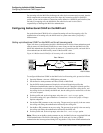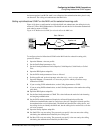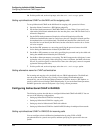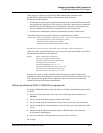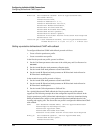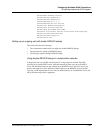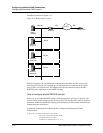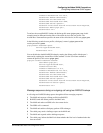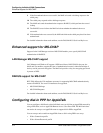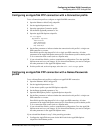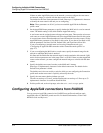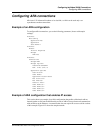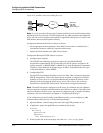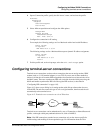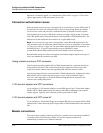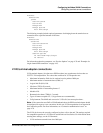
4-72 MAX 6000/3000 Network Configuration Guide
Configuring Individual WAN Connections
Enhanced support for MS-CHAP
9 If the first authentication was successful, the MAX unit sends a challenge request to the
called party.
10 The called party responds with a challenge response.
11 The MAX unit sends the authentication request to RADIUS, which performs the second
lookup.
12 The RADIUS server informs the MAX unit about whether the authentication was
successful.
13 If the authentication was successful, the MAX unit informs the called party that it has been
authenticated.
For detailed information about each attribute, see the TAOS RADIUS Guide and Reference.
Enhanced support for MS-CHAP
Support for the LAN Manager version of MS-CHAP enables you to specify MS-CHAP
authentication in RADIUS.
LAN Manager MS-CHAP support
LAN Manager and Windows 95 support a DES-based form of MS-CHAP. In the past, the
MAX unit was unable to support this form of authentication because it lacked knowledge of
the key used in password encryption. The MAX unit provides a key for encrypting passwords
by means of DES.
RADIUS support for MS-CHAP
RFC 2548 defines the VSA attributes necessary for supporting MS-CHAP authentication by
means of RADIUS. Two new VSA attributes are supported:
• MS-CHAP-Challenge
• MS-CHAP-Response
For detailed information about each attribute, see the TAOS RADIUS Guide and Reference.
Configuring dial-in PPP for AppleTalk
You can configure a MAX unit so that individual users can dial into an AppleTalk network by
using a PPP dialer, such as AppleTalk Remote Access 3.0 or Pacer PPP. The MAX unit does
not need to be set up as an AppleTalk router to support dial-in PPP to AppleTalk.
You can set up a unit to enable an AppleTalk client to dial in using PPP in two ways:
• With a Connection profile
• With a Names/Passwords profile



